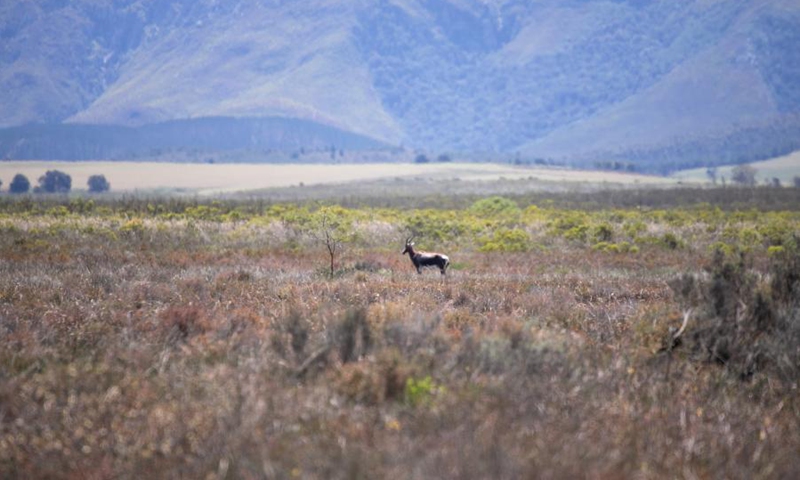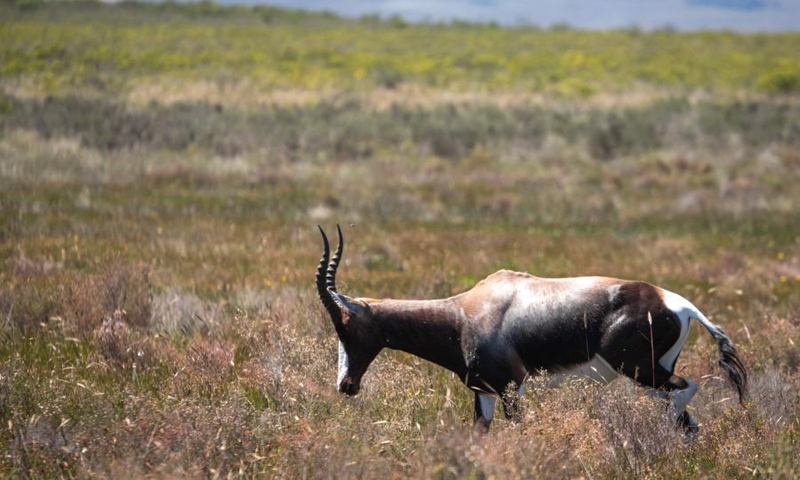Century-long conservation efforts in South Africa save bontebok from brink of extinction

Photo taken on Oct. 19, 2021 shows a view of Bontebok National Park, South Africa.(Photo: Xinhua)

Photo taken on Oct. 19, 2021 shows a bontebok in Bontebok National Park, South Africa.(Photo: Xinhua)
In South Africa's Western Cape Province, a large herd of the bontebok, a rare antelope subspecies, roam freely within a namesake national park. The large white blaze on their face distinguishes them from other animals in the park.
"At the moment the bontebok population (in Bontebok National Park) is quite healthy, and it is growing steadily," Bontebok National Park manager Bulelwa Msengi told Xinhua in a recent interview.
The last count done two weeks ago showed that the park has 194 bontebok, including 14 calves in its 3,400-hectare fully fenced area, but the number could increase as they are in the lambing season, which is from September to October or early November sometimes, and are still giving birth, said Msengi.
As early as 1931, the original site of Bontebok National Park was near Western Cape's Bredasdorp to conserve the last remaining 17 bontebok, said Msengi. Although bontebok numbers increased to around 100, population growth thereafter halted as the habitat of the park was found to be unsuitable for this species, and in 1940s some bontebok were sent to another place to establish a backup population.
The manager said that later in 1961, the park was moved to its current location in Swellendam, where there is the indigenous vegetation known as fynbos, to provide the bontebok a more suitable and bigger place to thrive. By 1969, it was estimated that the population of the bontebok in the park had been restored to around 800.
Their numbers have increased to 3,000 across the country at present, making the conservation story a "heart-warming success," according to South African National Parks (SANParks), the national parks management body.
The conservation began earlier than the official intervention, when some land owners set aside portions of their properties to form temporary reserves, said the SANParks.
To ensure the grazers have enough food and avoid too much competition in this regard, the park usually keeps the number of them between 130 to 180, within the range that the park can afford based on its capacity, said Msengi, adding that the park will start to discuss with SANParks' game capture unit to translocate some bontebok to other parks or reserves after another count early next year.
A national biodiversity management plan for the bontebok was published in 2019 by the government to ensure the long-term survival of the bontebok in nature, with objectives including conserving the genetic integrity and diversity of the bontebok and preventing further habitat loss and habitat degradation.
The plan seeks to bring together the private sector, national and provincial agencies, government departments and others to take concerted actions.
Msengi said due to measures like patrolling every day, the park hasn't experienced poaching of the bontebok. And she has kept the patrolling time secret to ensure the park's security.
